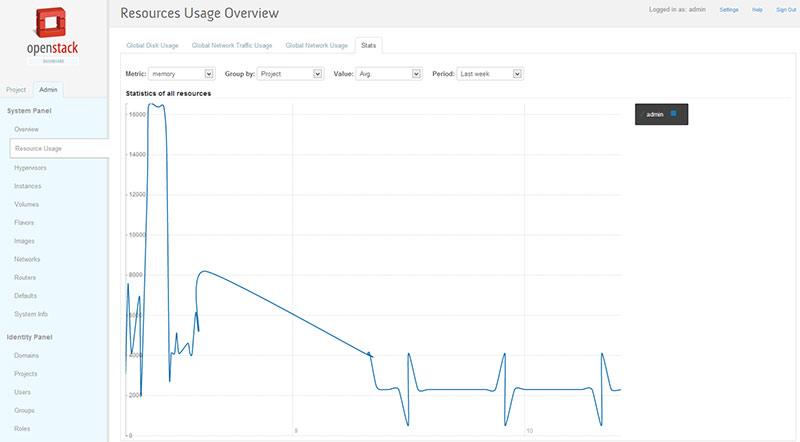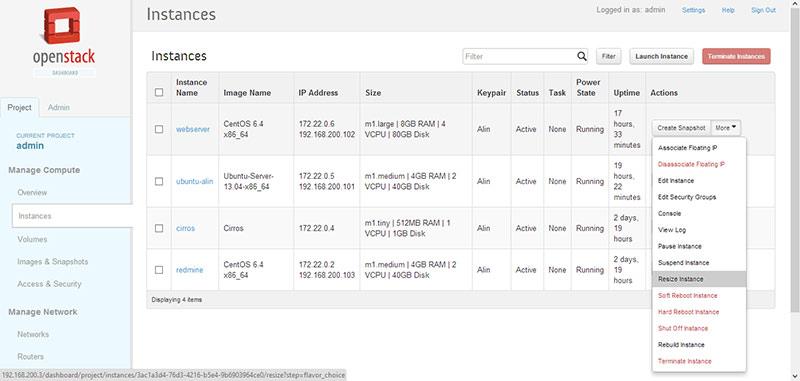Read time: 3 minutes
Introduction
Havana is the name of leading opensource project for private and public clouds named Openstack. It will be released next week on 17th October 2013 just before the OpenStack summit in Hong Kong which is on November 5-8, 2013.
On OpenStack Havana release notes page you can find all the new features and improvements that havana brings.
One week before the big event I've installed the release candidate of RDO Havana on two of our servers in our datacenter. In this article I will try to describe what is my first opinion about this new release and it's great features.
New features
After installing Havana you will find a slightly different dashboard. Horizon has been modified to make room to all new features that havana provides. On the admin menu you will find some new menus:
Resource Usage
On this menu you will find all tenants and what amount of data they have used in the last 30 days. Also if you go to stats you can have a graphic representation of resources that your cloud has used. There you can filter by metric, group by project, and period of time.

Hypervisors
Is the pannel where you find all your hipervisors and their cpu, memory and disk usage. This is a nice thing because in OpenStack grizzly you could only see hypervisor usage from command line using this command : nova-manage service describeresource HostName so if you have many hosts in the cloud then it gets difficult for you to monitor all resources used by a particular hypervisor. Here you can find an interesting list of which hypervisor are supported on OpenStack and which particular feature are supported.

System Info
System Info has been changed too. Here you can find all openstack services status, compute services, availability zones, host aggregates and, most important for daily use network agents status. Here you can determine if one of your compute node has a failed status on his Open vSwitch agent or if any DHCP agent is down. This new features can help a lot an administrator of a large cluster to quickly determine any problem within his cluster.
Volumes
Also the Volumes menu has been modified. Now you can create volume types from dashboard. So I have defined a volume type NFS that uses a seaparate storage, an IBM DS3400 with a pool of 4 1TB HDDs in raid 10.
Project Overview
In the Project Overview the user can find it's limit summary (he can find how many instances, VCPUs, Ram, Floating IPs and Security Groups he is currently using).
Resize Instance
On the Instance menu you have three new options, one of them is Resize Instance. With this option the user is able to change instance flavour of a running instance without rebooting the machine. This is a very nice thing because in Grizzly you couldn't resize your instance from dashboard. When resizing an instance the downtime it's very small, it's almost unnotified, somehere between 3 to 5 seconds of ping loss.

Updating Havana from beta 3 or rc1 to final release
If you are running a beta version or the rc1 release of havana from RDO or any other operating system type, if you update the packages to the latest version you should allways use the following commands to sync all your db changes to the new installed packages:
- [root@havanamaster ~(keystone_admin)]# keystone-manage db_sync
- [root@havanamaster ~(keystone_admin)]# nova-manage db sync
- [root@havanamaster ~(keystone_admin)]# glance-manage db_sync
- [root@havanamaster ~(keystone_admin)]# cinder-manage db sync
If you have any problems running havana or updating it to the latest version you can contact us .
Conclusions
Havana is the latest version of the OpenStack software for building private, public and hyprid clouds. It offers new interesting functionalities and it's a much stable release. With it's new features openstack can now compete with any closed-source proprietary solution and, in the end, I think openstack will be the reference in the cloud computing niche.






